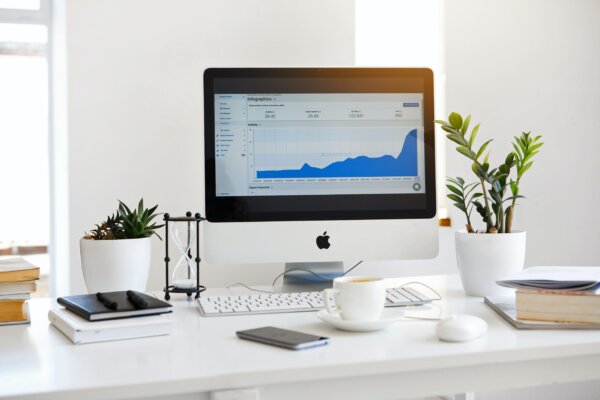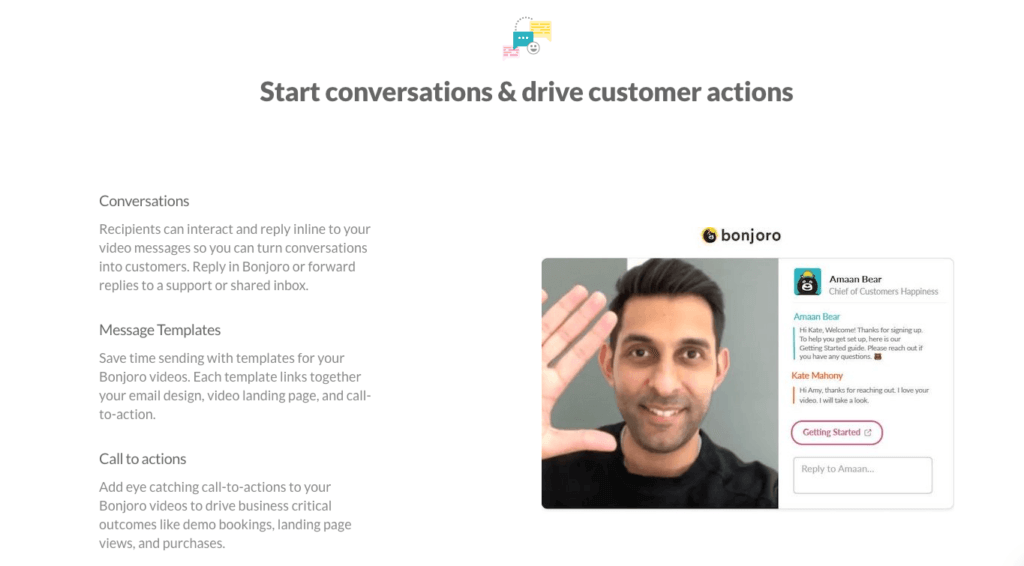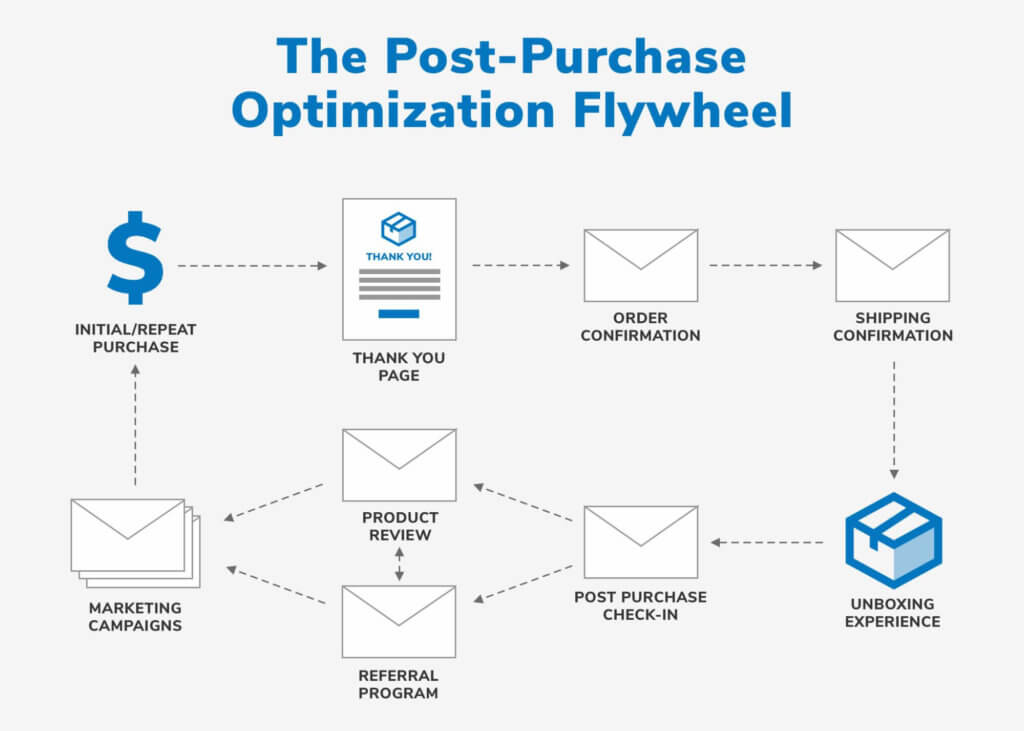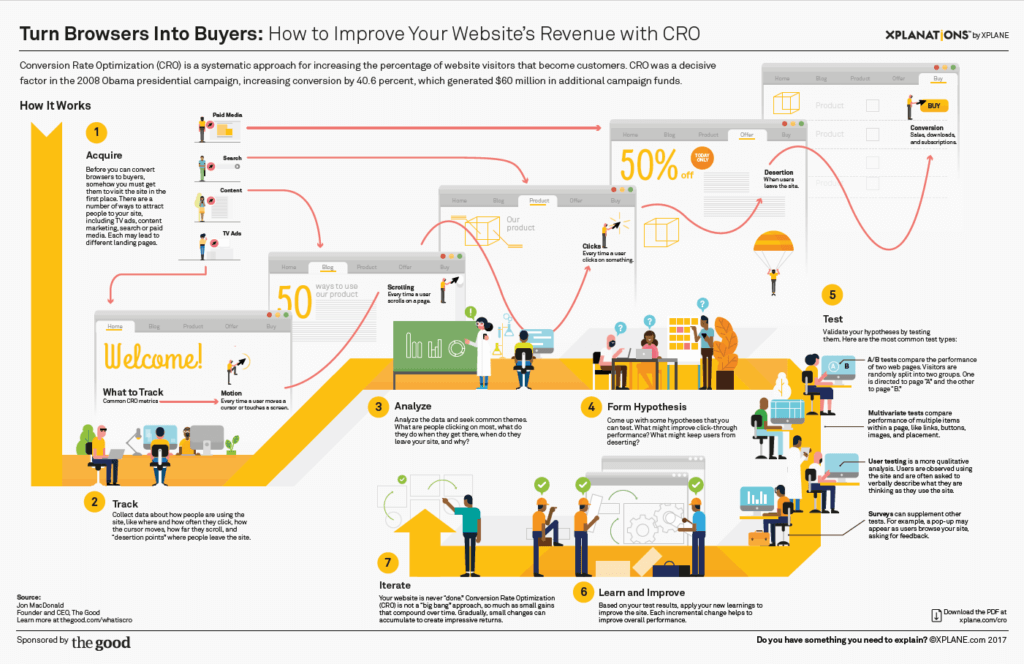
How To Measure (And Improve) Your CRO Program In Each Stage Of Business
From startup to enterprise, here’s how to make sure you have a healthy CRO program at three business stages.
Special Note: This article on how to improve your CRO was inspired by an episode of our podcast, Drive & Convert. We go into much more detail here than we did on the show, but you might enjoy listening to the original conversation and subscribing to receive future episodes.
In high school and college, it was relatively easy to figure out where you stood.
You were either in the cool crowd, the sports clubs, or…one to those other ones (me). You were either at the top of your class, master of the Bs, or praying for a passing grade.
Then we all graduated or left. And post-classroom, measuring up got murky.
Now, in the business world, it’s harder to know where you stand. Sure, there are all kinds of vanity metrics you could look at like hours worked, employees hired, followers. But those don’t really tell you how well a business is doing.
Likewise, for ecommerce store owners, it’s tough to tell whether you’re bombing, coasting, or excelling at conversion rate optimization (CRO) — the gatekeeper to ecommerce success. We know because everyone from startups to enterprises asks us, “how well should my site be converting?” and “what’s a good conversion rate?”
The answer (“one that’s always improving”) isn’t as straightforward as brands hope. Turns out, there’s no one benchmark rate you can measure against. It isn’t that simple, and that’s the bad news.
The good news?
For brands looking to see how they measure up, we can tell you what activities make for healthy, mature CRO (the kind that’s always improving) at each company stage.
And that’s exactly what we outline below.
From startup to booming enterprise, this insight breaks down what you should be doing at each ecommerce business stage to get a passing grade (or A++, you high-achiever!).
Here’s what you’ll find ahead:
- Three levers you can pull for ecommerce growth
- CRO for early, middle, and late-stage companies
- The best starting point for any size ecommerce business
The three levers you can pull for ecommerce growth
At a high-level, there are only a small number of ways to grow your ecommerce company. You can:
- Acquire more new customers
- Increase your average order value (encourage new and existing customers to buy more)
- Improve your average customer lifetime value (get customers who have purchased to come back and purchase again)
There are several ways to do each of these. Popular options include investing in content, ads and remarketing, and partnerships. None of those are bad options, but your best investment — the one that generates the best returns — is conversion rate optimization (CRO).
Conversion rate optimization is the key to pulling all three levers
According to marketers, CRO is one of the most important aspects of digital marketing, second only to machine learning. And for good reason — incorporating CRO into your growth strategy has plenty of benefits including:
- Higher return on ad spend (ROAS)
- Better performance from organic and referral traffic
- Improved customer retention
- Increased exposure, and of course
- Increased revenue
Even so, many brands remain skeptical. For starters, CRO looks expensive and time-consuming.
And yes, it can be a good deal of work upfront. However, because it pays dividends over the long-term (think: as long as you’re in business), it has the highest ceiling for impact.
Think of it this way: investing to improve your CRO is a bit like building a retirement account. Every small investment you make in improving how easy it is for visitors to purchase on your site is going to grow into high-value, sustainable returns.
Can any size ecommerce company do CRO?
The short answer is yes.
The long answer is the methodology changes for each stage. As your company grows, the sophistication of your CRO program increases and your results get more predictable and more substantial.
There are three stages we break ecommerce companies into. In terms of annual recurring revenue (ARR), those stages are:
- Early-stage: Just launched to making your first $1 million
- Mid-stage: $1 million to $25 million
- Late-stage: $25 million and above
If those initially seem like too-massive brush strokes, bear with me — they’re large for a reason:
- From a CRO perspective, the activities for pre $1 million are similar. You don’t yet have enough traffic to run A/B tests, so you’re focused more on gathering rich data and developing qualitative methods. (Well, you could A/B test, but you wouldn’t have statistical significance, so the results wouldn’t be very helpful).
- Then the $1 million to $25 million is so broad because, with the right CRO activities, it’s surprisingly quick to jump from one end of that range to the other.
So, how do you know if you’re up to par or even top of your class in each of these stages?
Let’s break it down.
What CRO looks like for early-stage companies
Many small brands feel like they can’t do optimization because it’s too expensive. They’re also often intimidated by the data. There’s a grain of truth to these beliefs. A full-fledged CRO program is too expensive (and wouldn’t make sense!) for this stage.
However, there are plenty of activities a young company can do to work their way up to where more robust CRO does make sense.
What this stage looks like
You have:
- Less than $1 million in annual revenue
- Most of the company responsibilities are on your plate as founder
- A loose definition of who your customer is and what they want
- An uphill battle to make sure people know you exist
- An early adopter crowd who will tolerate website complications
- Visitors converting around an easy to use website or product, not your brand
- A tendency to make decisions around your gut
Your #1 CRO focus as an early-stage ecommerce business
In the early stages, you’re trying to find those elusive “100 true fans.” You want to focus on driving traffic from the right customers who will stick with you no matter what.
How to get a passing CRO grade
In this stage you want to:
- Collect quantitative data from Google Analytics (GA): Your Shopify or BigCommerce dashboard may be helpful, but it’s not robust enough to help you identify key improvements. For a better picture of the consumer experience, you’ll need to set up specific GA reports as your “single source of truth” and dive into those regularly.
- Gather qualitative data from heatmaps, surveys, and customer interviews: You can’t read the label from inside the jar, and you can’t know what it’s like for customers to experience your site from your side of the laptop. Qualitative methods, like heatmaps and interviews, are key for seeing their perspective, even if you only have 100 customers a week.

- Interpret opportunities for improving your site: Based on the two data sources above, you want to find ways to continuously improve your website and make it easier for the right customers to buy. Where are people getting stuck? Where are they leaving? Why? Identify the holes in your bucket and fix revenue leaks.
How to get a stellar CRO grade:
- Email every consumer who buys from you: There’s no volume in this stage where you can’t email every single purchaser individually and say, “Hey, thank you so much for buying from me. I’m the founder and I’m sending you a personal email. I want to know why you purchased and what your experience was like, so we can continue to improve our site. Can we chat for 10 minutes at some point, or could you spend ten minutes right now to write down your thoughts?”
- Use a tool like Bonjoro: Differentiate your brand and experience with personalized emails like the one above and personalized videos like the ones you can create with Bonjoro.

- Follow the tips and testing strategies in our post on How to Improve Your Conversion Rate When You Have More Time Than Money. It’s a tactical crash course on how to improve your CRO for this stage.
Reaching $1 million in annual revenue may seem like a big stretch (or not!) from where you sit today, but if you start with the steps above, you will cross that hurdle.
How The Good can help improve your CRO at this stage:
If you have under 40,000 in monthly traffic, aren’t seeing conversion rates you’re happy with, and want to find out why quickly, our sister company Commerce Critiques will show you. It breaks down why your site isn’t converting and exactly how to fix it. It’s a great way to work with our experts at a small brand price point.
What CRO looks like for mid-stage companies
Once you cross the $1 million annual revenue hurdle, you likely have (or will soon have) 40,000 visitor sessions per month. This opens up the realm of statistical significance, where you can run tests and have confidence your results aren’t false positives or negatives. And that means you can invest in data-driven decisions.
What this stage looks like
You have:
- $1 million to $25 million in annual revenue
- Started growing your team with either employees or contractors; you may have a marketing lead or ecommerce manager — it’s no longer you doing everything
- Reinvested revenue into growth strategies
- Begun growing rapidly as you find various ways to gain momentum
- Started relying on data more than your gut for optimization decisions
- A refined customer profile, plus a clarified vision for who your site serves and what it needs to do
Your #1 CRO focus as a mid-stage ecommerce business
If you’re a mid-stage company, your #1 CRO focus is making decisions based on data. You have enough traffic to A/B test changes and receive accurate results. So, your focus is on continual testing and generating value based on test results you see.
When you do this, closing the gap between $1 million and $25 million annual recurring revenue can happen quickly.
How to get a passing CRO grade
If you followed the early-stage steps, you’ve been collecting rich data and building a clear picture of what your site is like for visitors. Now, in this stage, you want to use all that information to optimize the three ways ecommerce businesses grow:
- Convert more first-time visitors: Identify which channels are driving the most revenue (email? PPC? social media?) and double down on those channels.
- Encourage new and existing customers to buy more (increase average order value, AOV): Dig into fundamentals proven to increase average order value. For example, cross-sells, up-sells, bundles, limited-time offers, and well-placed social proof.
- Get customers who have purchased to come back (improve customer lifetime value, LTV): Generally speaking, you want your LTV to be at least three times higher than your costs of acquiring new customers. So, if you’re spending $100 on marketing to acquire a new customer, that customer should have an LTV of at least $300 for healthy profit margins. To work towards that 3:1 ratio, identify the 20% of customers who generate 80% of your revenue and hone in on keeping those around. Test VIP treatment, membership programs, and loyalty programs that deliver an above-and-beyond experience for your biggest fans.
How to get a stellar CRO grade:
- Focus on constant, iterative improvements: Rather than looking for a “big bang” improvement, look for ways to improve the customer experience by 1% every week. This sounds boring, but it pays much bigger dividends than the big bang approach. As James Clear pointed out, “If you get one percent better each day for one year, you’ll end up thirty-seven times better by the time you’re done.”

- Involve other internal teams: When’s the last time you interviewed the customer service staff to understand common issues, complaints, and hassles? If you’re not already doing this, set up a recurring meeting with them. Their insights can help you hone in on quick improvements.
- Optimize post-purchase: Most brands think CRO ends when the customer makes a purchase, but what happens after checkout is an enormous opportunity to encourage repeat purchases. Fun fact: existing customers are 60-70% likely to make a repeat purchase vs. new customers who are 5-20% likely to make their first purchase. Optimize each step of the customers’ post-purchase journey to encourage higher conversions and earn more revenue.

How The Good can help improve your CRO at this stage:
For mid-stage companies who are paying to drive website traffic and have time to consume training, we recommend our Conversion Growth Program™.
The program includes personalized action plans for your specific needs (kind of like a personal trainer for your business). Plus, weekly coaching with our in-house CRO experts. That’s in addition to 24 hr community support, workshops and training, and exclusive discounts to the best ecommerce tools.
What CRO looks like for late-stage companies
You’ve proven value in the middle-stage and moved up to late-stage. By now, you’re probably starting to see the long-term value of CRO. In fact, you likely either have an entire in-house team centered on this or feel an acute need for one.
What this stage looks like
You have:
- Over $25 million in annual revenue
- An in-house team that focuses on CRO (or a strong need for one)
- An interest in augmenting, training, or accelerating that team
- Different teams for different parts of the product experience (e.g. demand team for strategic advertising and/or retention team for win-backs and repeat sales)
- Started heavily relying on data to identify, test, and measure important changes
Your #1 CRO focus as a late-stage ecommerce company
You’ve built a good picture of the customer experience and you’ve been making data-backed decisions for a while. Now, you can start running more nuanced and complex tests. For example, executing multiple tests simultaneously (something we do for the $2-$25 million level) and running higher volume/more frequent tests.
How to get a passing CRO grade
- Lean into the scientific method: Chances are you dabbled in this mid-stage. Here’s where you go all-in on hypothesizing, testing, analyzing, and iterating (see the graphic below). Where this level of process would’ve been tough beforehand, your business now has the data, team, and revenue you need to pull it off.

- Secure management buy-in: To do the steps above well, you’ll need access to budget and resources. If the management team isn’t already bought in on the benefits and ROI of CRO, now’s a good time to make a compelling case for more budget here.
- Press into personalization: While personalization gets thrown around a lot in ecommerce, it’s rarely needed until you have differentiated journeys for your customers. At this stage, you do, and you can lean into improving them. For example, return users coming from email might see a different banner than first-time visitors.
- Run late funnel tests: At this point, you have enough traffic to run tests in checkout — one of the pages where you have the least amount of visitors — so test all the way through the customer experience.
How to get a stellar CRO grade:
- Work with an outside team: Consider a firm like The Good that can augment your team with fresh perspectives and ideas. These can accelerate what your team is already doing.
- Optimize for every type of customer: While you’ve probably honed in on your top 20% by now, you may be neglecting your other six types of customers. Identify which ones you’re leaving out in the cold, and then improve the experience for each segment. This ties into the personalization step above.
How The Good can help improve your CRO at this stage:
At this stage, there are two ways we can help:
- Conversion Growth Audit: A 360-degree quantitative and qualitative analysis of site-wide conversions that goes beyond surface-level metrics. We build a detailed report outlining your strengths, weaknesses, and top opportunities for increasing conversions.
- Conversion Growth Program™: A done-for-you testing and conversion optimization service that includes: a complete funnel analysis, optimization roadmap, ongoing conversion research, monthly reporting, and a dedicated conversion strategy team.
Caveat: conversion rate isn’t always the best starting point (here’s where to begin instead)
I know, that seems like a strange wrench to throw your way now, after pages of CRO talk, but in our experience, it’s an important caveat. If you make conversion rate your end-all-be-all metric, you’re wading into dangerous waters. It’s one of the best things you can invest in, but it’s not the only metric that matters.
For example: Put doubling your conversion rate and doubling your average order value side-by-side. Either way, you’re going to get a mathematically similar outcome. If you get 100 people to spend $2 or 100 new people to spend $1, you’ll make the same amount of revenue.
So, if conversion rate isn’t a fail-proof starting point, where do you start? Average order value? Somewhere else?
It depends.
First things first: start with your particular weaknesses
Here’s our take on where to begin: start with your problem spots.
For example:
- Is your average order value too low?
- Is your cart abandonment rate particularly high?
- Are too few people adding products to cart?
You want to analyze where your particular weakness or high-impact area is (look for clues in the data and customer experience). Then, assess your metrics holistically. For example, maybe you already have a strong, steady conversion rate and you need to get your average order value up. Your starting point depends on your weakness.
Next: address high-impact areas with vitamins, not silver bullets
Once you’ve identified your particular weakness and associated metrics, you can work out a strategy for addressing it.
But be careful.
Many articles and “experts” offer improvement plans in the form of silver bullets or the ecommerce equivalent of diet bills. These look like a quick fix — and do in fact have a quick impact. But they’re sweet-tasting poison for your brand.
Take popular advice around discounting. Running a 20% off promo will improve conversion rates in the short-term. But discounting leads to long-term, systemic problems that leave you in a worse position than where you started. For example, frequent discounts will drain your margins, train poor customer habits, and lower perception of quality.
Keep in mind conversion rate is dictated by customer experience, not the other way around. So, start with weaknesses in your customer experience (using the tips above for each stage of ecommerce businesses) and then focus on whichever metrics are most important to move the needle for your business.
We help you improve your CRO and turn more visitors into buyers, no matter your stage
Our mission is to remove all the bad online experiences until only the good remains, and we work with a wide variety of ecommerce company sizes to do that.
If you’re not moving the needle the way you want, we have plenty of options that will get you up to speed.
Already moved beyond the early stage? Check out the Digital Experience Optimization Program™.

About the Author
Laura Bosco
Laura Bosco is a former Content Marketer at The Good and freelance writer. She helps translate thoughts, opinions, and client experiences into written products that are both entertaining and educational.